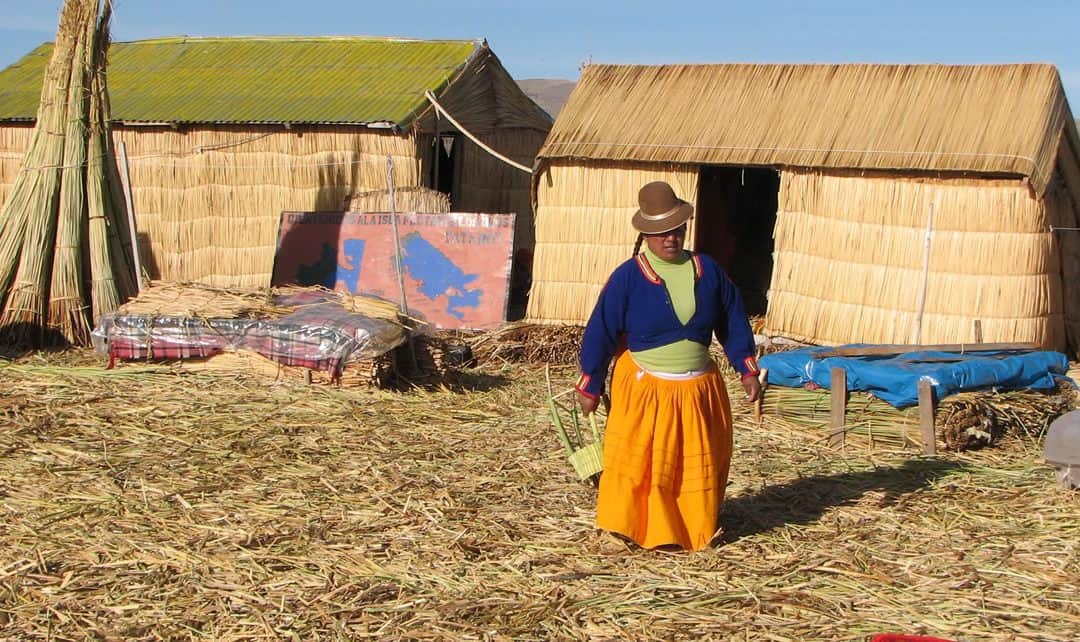On the Uros Islands of Peru, home maintenance takes on a whole new meaning. Forget replacing the roof or the furnace. The indigenous inhabitants of these islands face a much more drastic task – that of rebuilding their entire homes every few years! That’s because the dwellings and the foundation on which they are built are made of reeds – totora reeds, to be precise.
The indigenous people – a mix of Quechua and Aymara – have lived on their floating islands for centuries, having moved here to escape attacks from Inca and Colla cultures. Here they found relative peace and survived by fishing and hunting. Today about 800 people inhabit roughly 50 artificial islands that extend out from the city of Puno.
Without the reeds, life in the Uros islands would not exist. The tall grass-like plants, which grow in abundance in the shallows of Lake Titicaca, are collected, then bundled and dried to build the homes. To create the islands, the reeds are layered more than a metre deep. Not surprisingly, the plants are subject to decay over time and so must constantly be replaced. New layers of matting are often added above for stability.
The average island measures about five square metres. It takes about two months to build and lasts a dozen years. Islanders rely on solar power, while eco toilets replace the need for plumbing. Some of the islands also have a church, school, post office and shops.

Reed houses and reeds drying in the sun as seen on approach to one of the floating Uros Islands in Peru.
Aside from building homes, reeds are also used to make some of the furnishings such as beds and mats, and the beautiful sea-worthy gondolas. The reeds are burned for warmth and the green roots are even eaten.
It wasn’t until the mid 1960s that the islands came into contact with the modern world and today many inhabitants earn money from tourism. Tour boats take visitors from the mainland to the islands, stopping for an hour or so, enough time to take pictures and get a glimpse of this unusual way of life and purchase colourful handmade textiles and reed crafted souvenirs.
As you might expect, stepping on the reeds is a soft and sometimes squishy affair, a bit like walking on a giant sponge. Though life here can be precarious at times, especially in stormy weather, living on an island of reeds also has its advantages. If you ever want to get away from your neighbours or retreat to a place of total seclusion, simply pick another spot in the lake and build a new island.
Diane Slawych is a contributing writer for REM.














